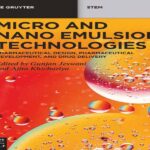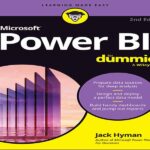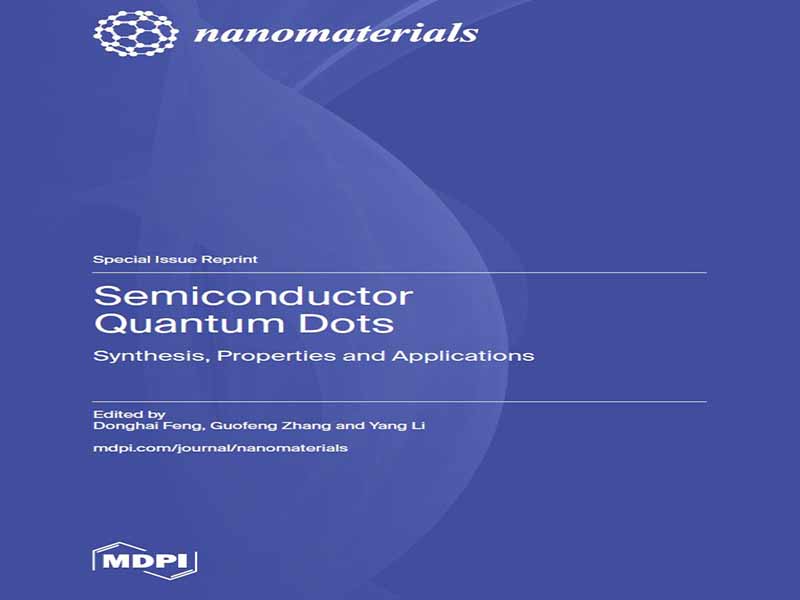- عنوان کتاب: Semiconductor Quantum Dots: Synthesis, Properties and Applications
- نویسنده: Donghai Feng, Guofeng Zhang, Yang Li
- حوزه: نیمههادی
- سال انتشار: 2025
- تعداد صفحه: 128
- زبان اصلی: انگلیسی
- نوع فایل: pdf
- حجم فایل: 4.55 مگابایت
نانوذرات نیمههادی با اندازههای کوچکتر از قطر بور اکسیتون، تحت محدودیت کوانتومی قرار میگیرند و نقاط کوانتومی (QD) نامیده میشوند که خواص فیزیکوشیمیایی وابسته به اندازه را نشان میدهند. برای کشف و سنتز نقاط کوانتومی، سه پیشگام – مونگی جی. باوندی، لوئیس ای. بروس و الکسی آی. اکیموف – جایزه نوبل شیمی 2023 را دریافت کردهاند [1]. از زمان کشف نقاط کوانتومی در اوایل دهه 1980 [2]، سنتز، خواص و کاربردهای نقاط کوانتومی به طور گسترده مورد بررسی قرار گرفته است [3،4]. استراتژیهای مختلفی، از جمله رویکردهای فیزیکی، شیمیایی و بیولوژیکی، برای توسعه نقاط کوانتومی با اندازهها، ترکیبات و ساختارهای قابل کنترل توسعه یافتهاند [5-8]. نقاط کوانتومی (QDs) دارای خواص اپتوالکترونیکی برتر، از جمله قابلیت تنظیم گسترده، پهنای باند انتشار باریک، روشنایی بالا و راندمان بالا هستند و طیف گستردهای از کاربردهای بالقوه دستگاهی را در برداشت انرژی خورشیدی [9]، روشنایی [10]، نمایشگرها [11]، آشکارسازها [12]، تصویربرداری زیستپزشکی [13] و فناوری اطلاعات کوانتومی [14] ارائه میدهند. این شماره ویژه شامل هشت مقاله، شامل هفت مقاله تحقیقاتی و یک مقاله مروری است که به سنتز، خواص و کاربردهای نقاط کوانتومی با اجزا و ساختارهای متنوع اختصاص یافته است. این مطالعات شامل بررسی یکنواختی اندازه در نقاط کوانتومی پروسکایت CsPbBr3 از طریق آلایش مناسب منگنز [15]، کامپوزیتهای فوتوکاتالیستی کربن مغناطیسی مقرون به صرفه QDs/FeOx [16]، اثرات کوپلینگ پلاسمون سطحی بر تبدیل رنگ از چاههای کوانتومی به نقاط کوانتومی [17]، مطالعه طیفسنجی فوتولومینسانس وابسته به دما و اندازه بر روی نقاط کوانتومی CuInS2 [18]، روشهایی برای به دست آوردن یک فرکانس لارمور واحد در دینامیک اسپین همدوس نقاط کوانتومی کلوئیدی CdSe و CdS [19]، دینامیک اسپین همدوس دمای اتاق در نقاط کوانتومی پروسکایت CsPbBr3 [20]، آپتاسنسورهای مبتنی بر نقاط کوانتومی CdSe/CdS/ZnS با کیفیت بالا برای تشخیص همزمان دو نشانگر زیستی اصلی بیماری آلزایمر [21]، و مروری بر پیشرفتها در دیودهای ساطع کننده نور نقاط کوانتومی آبی پردازش شده در محلول [22] است. تحقیقات در مورد سنتز، خواص و کاربردهای نقاط کوانتومی همچنان دقیق و مورد توجه خواهد بود. به دنبال رویداد برجسته جایزه نوبل شیمی 2023، شماره ویژه ما به توسعه نقاط کوانتومی میپردازد و برای خوانندگان عمومی نانومواد جالب خواهد بود.
Semiconductor nanoparticles of sizes smaller than exciton Bohr diameters undergo quantum confinement and are called quantum dots (QDs), which exhibit size-dependent physicochemical properties. For the discovery and synthesis of QDs, three pioneers— Moungi G. Bawendi, Louis E. Brus, and Alexei I. Ekimov—have been awarded the 2023 Nobel Prize in Chemistry [1]. Since the discovery of QDs in the early 1980s [2], the synthesis, properties, and applications of QDs have been extensively investigated [3,4]. Various strategies, including physical, chemical, and biological approaches, have been developed to develop QDs with controllable sizes, compositions, and structures [5–8]. QDs have superior optoelectronic properties, including wide tunability, narrow emission bandwidth, high brightness, and high efficiency, and offer a wide range of potential device applications in solar energy harvesting [9], lighting [10], displays [11], detectors [12], biomedical imaging [13], and quantum information technology [14]. This Special Issue includes eight contributions, comprising seven research articles and one review article, dedicated to the synthesis, properties, and applications of QDs with diverse components and structures. These studies involve the investigation of the size uniformity in CsPbBr3 perovskite QDs via appropriate manganese doping [15], cost-effective magnetic carbon QDs/FeOx photocatalytic composites [16], the effects of surface plasmon coupling on the color conversion from quantum wells into QDs [17], temperature- and size-dependent photoluminescence spectroscopy study on CuInS2 QDs [18], methods for obtaining one single Larmor frequency in the coherent spin dynamics of colloidal CdSe and CdS QDs [19], room temperature coherent spin dynamics in CsPbBr3 perovskite QDs [20], high-quality CdSe/CdS/ZnS QD-based aptasensors for the simultaneous detection of two different Alzheimer’s disease core biomarkers [21], and a review on advances in solutionprocessed blue QD light-emitting diodes [22]. Research on the synthesis, properties, and applications of QDs will continue to be rigorous and of high interest. Closely following the prominent event of the 2023 Nobel Prize in Chemistry, our Special Issue highlights the development of QDs and will be of interest to general readers of Nanomaterials.
این کتاب را میتوانید از لینک زیر بصورت رایگان دانلود کنید:
Download: Semiconductor Quantum Dots: Synthesis, Properties and Applications




































نظرات کاربران